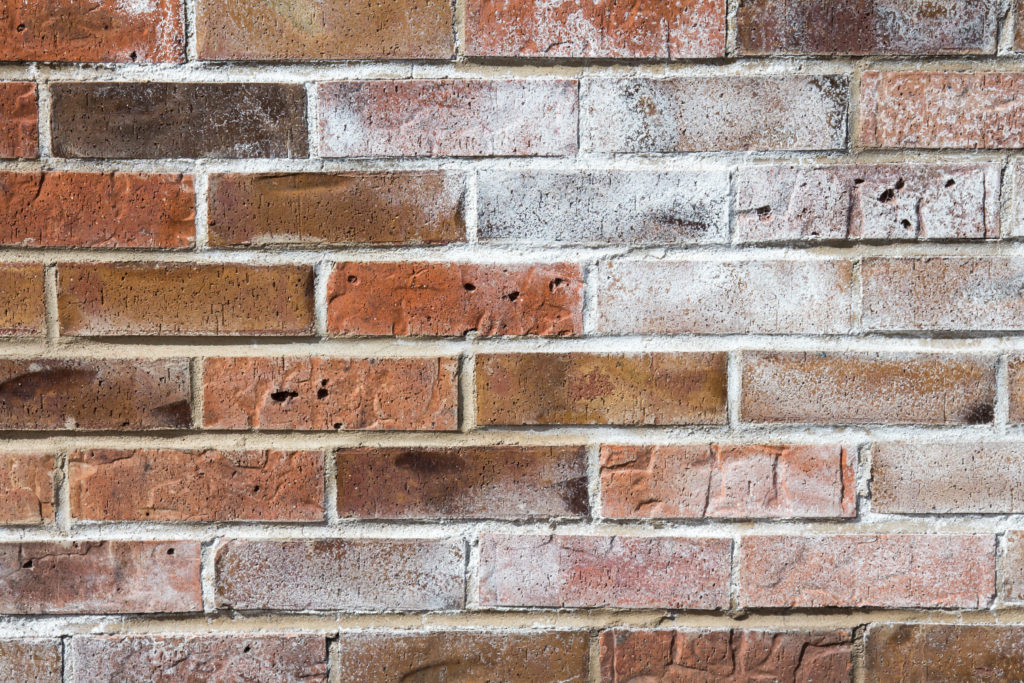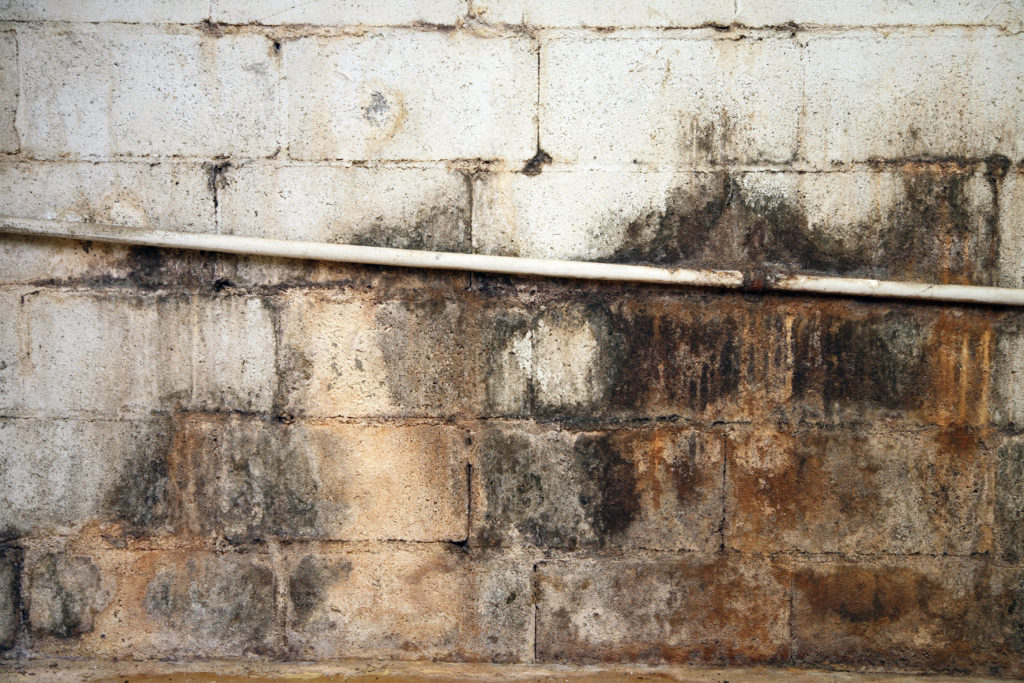Ugly Stains on Your Basement Walls? What They Are & How to Fix Them
If you have stains on your unfinished basement walls, you may have written them off as normal or nothing to worry about. However, those stains on your basement walls aren’t an unsightly thing to ignore. They are an indication that water is intruding into your home. While mold isn’t the reason for every basement stain, it is an indicator that your home and family’s health could be at risk. Excess moisture in the home reduces the overall indoor air quality and only gets worse when there is mold growth.
Wall stains and related problems can occur when groundwater consistently infiltrates the porous concrete walls through capillary action. Therefore, the first step to addressing ugly stains on basement walls is to address the source of the issue and where the moisture is coming from. If you don’t take the steps to address the moisture issue, the ugly stains are going to return. Before you attempt to clean your basement by yourself, it’s important to know what you are looking at and how to deal with the situation. Using the wrong products or methods to get rid of basement wall stains can be risky or lead to more problems so consult with a moisture management professional to determine the best course of action.
Different Wall Stains and What They Mean
White, Powdery Substances
If you see a white, powdery substance on your basement walls, chances are that it’s efflorescence. It’s a loose mineral salt that is commonly found on basement walls in humid environments. It’s unsightly but not a sign of damage to your home.
However, it is a sign of high humidity. Moisture flows through the porous concrete in your basement walls and into your home, causing efflorescence. As moisture flows through your basement walls and into the air, any minerals in the water are left behind on the basement walls in the form of this white, powdery residue.
While it can easily be cleaned up, it will return if the level of humidity isn’t properly maintained. A dehumidifier can help your basement maintain the right humidity level.

Chipping, Flaking Materials
In an effort to seal the basement walls or spruce up the space, many basement walls have coatings such as paint, waterproofing coats, sealants, or hydraulic cement. As groundwater infiltrates the basement walls and pressure develops beneath it, these coatings can and will eventually cave in. When this happens, the coatings on the walls will bubble up, flake, or peel away, leaving an unsightly and dirty basement with paint chips all over the floor.
Removing what you can off the walls and covering them, either with a vapor barrier covering or by finishing the area, is the best method to deal with an issue like this. In the near future, new paint will merely repeat the process and produce more issues.
Dark Stains or Patches on Drywall

Dark patches and stains on drywall are generally signs of a mold infestation, and they’re a good indicator that something needs to be done about it. Drywall mold grows on surfaces that aren’t visible until you step outside, so there’s a high probability that there’s a lot more of it than you can see.
Check behind your drywall to determine whether the mold problem is greater there, as spores formed behind drywall will also enter your air and impact your indoor air quality.
Mold removal is much more tricky than mold prevention, so it should always be done by a moisture management professional.
Reddish Stains on Basement Walls and Floors
Red and rusty looking stains on the wall are a sign of iron ochre infiltration. Iron ochre is found in abundance anywhere there is a lot of iron in the soil. Iron ochre is transferred into the basement with the water that seeps in, just like efflorescence. While they’re not detrimental to human health, it can lead to many problems in your drainage systems by building up in pipes and drains, later causing them to clog and fail.
Iron ochre stains are very stubborn, and they’re almost impossible to clean. They will stain anything they touch, including carpeting, drywall, plastic, and other materials. This unfortunately means that the most effective way to deal with these stains is to cover them. Overall, it’s a good idea to avoid having iron ochre flooding into your basement whenever possible.
Basement Services by Jersey Shore Crawlspace Enhancement
It’s imperative for homeowners to perform regular home and basement inspections to ensure that no significant changes occur over time that can lead to structural damage or costly repairs. The basement should be treated just like the attic, roof, or gutters. It’s a significant piece of the home puzzle, therefore it’s better to be proactive rather than reactive.
We’re proud to offer a comprehensive evaluation to monitor the moisture conditions within your basement, all the while ensuring that your home is not at risk for issues commonly found in homes with basements.
We perform this evaluation 3 times throughout the year to stay in front of seasonal issues, monitor the moisture conditions, and service your vents to ensure proper ventilation. With over 20 years of dedicated service for our fellow neighbors here on the shore, trust your basement with the Jersey Shore’s basement & crawl space pros!
Contact us today to schedule a 22-point inspection to ensure that your basement is in great shape and give you peace of mind!
